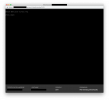Just started using proxmox. I like to use vnc viewer to connect to vms but UI have not been able to find anything about getting a VNC port from a running VM.
I did find that you can go to the monitor tab and run "change vnc <IP:increment> where increment is some increment from 5900 and ip is the interface to listen on. Is this the only way?
I.E "change vnc 0.0.0.0:1" allows me to now connect on any interface, port 5901 with a vnc client like vnc viewer. Was there already a port listening I could see somewhere or is this the way to go?
I did find that you can go to the monitor tab and run "change vnc <IP:increment> where increment is some increment from 5900 and ip is the interface to listen on. Is this the only way?
I.E "change vnc 0.0.0.0:1" allows me to now connect on any interface, port 5901 with a vnc client like vnc viewer. Was there already a port listening I could see somewhere or is this the way to go?


